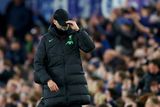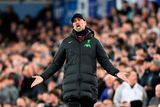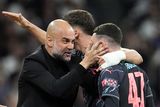Chelsea counting on new balance
Jose Mourinho banks on Blues not paying heavy price after club tightens the transfer belt
Chelsea manager Jose Mourinho
For years the concept of Chelsea as a model of sustainable transfer dealing seemed more preposterous than beach parties on Pluto.
Yet here we are on the verge of a new Premier League season for which the Londoners have strengthened by spending less on new players than they have raised from flogging unwanted ones. How did this happen? Has anyone told Roman Abramovich?
When the Russian sanctioned the purchase of Glen Johnson from West Ham just after buying Chelsea in the summer of 2003, it was the start of a season-long splurge that resulted in a net transfer loss of around £150m.
The following season, buys exceeded sales by £139m. Balancing the books did not seem like something that Abramovich could be bothered with.
Sure enough, for most of the past decade Chelsea have been among the first accused whenever opponents such as Arsene Wenger rail against "financial doping". Yet Chelsea always claimed, usually to much scoffing, that they would one day become self-sufficient and this summer's transactions suggest that, at least when it comes to transfer fees, the club may be devising a method of operating that does not depend on permanent indulgence by their sugardaddy. The fees for Diego Costa, Cesc Fabregas, Filipe Luis and Mario Pasalic were more than offset by those received for David Luiz, Romelu Lukaku, Demba Ba and Patrick van Aanholt, generating a profit of around £2m. So far this summer, Arsenal, Liverpool and the Manchester clubs are all deep in the red as far as transfers are concerned.
Caution is required here and not just because there are plenty of other aspects of a club's accounts. This is not the first time that Chelsea have been in the black in terms of transfer fees: they also made a profit in the 2008-'09 season when the newly-flush Manchester City lurched in to take Wayne Bridge, Shaun Wright-Phillips and Tal Ben Haim off their hands. But that seemed more like serendipity than good strategy and the following season Chelsea made a net loss on transfers of £22m. Then, in January 2011, Abramovich went out on a whim and ordered the purchase of Fernando Torres for £50m which, on top of captures including David Luiz and Ramires, contributed to a seasonal loss of nearly £90m. Goodnight, prudence.
Now, however, even though they are unlikely to find anyone to hand over £50m for the likes of David Luiz every year, Chelsea appear to be reaping the fruit of a well-laid plan. It is a different plan to the one that they originally tried. Back in 2005 the club lured a reputed top talent spotter, Frank Arnesen, from Tottenham Hotspur and appointed him director of football as part of a bid to cultivate their own talent and feed a constant supply of youngsters into the first team while supplementing the side with only occasional big signings.
Arnesen was a major influence in the acquisitions of John Obi Mikel, Salomon Kalou and Florent Malouda but very few of the younger players that arrived during his five years at Stamford Bridge made an impact on the first team. The latest strategy does not require youngsters to make it into Chelsea's first team at all. It does not even depend on Chelsea developing them. Because they can get others to do that for them.
Last season Chelsea had 18 players out on loan at other clubs and the season before that they had even more. Only Thibaut Courtois and possibly Kurt Zouma (bought from Saint-étienne in January before being loaned straight back to the French club) have done well enough to convince Jose Mourinho that they are ready to feature in his team. But plenty of others did well enough to persuade other clubs to buy them.
Everton forked out a record £28m for Lukaku. Back in January, Wolfsburg paid around £18m for Kevin De Bruyne. Those two Belgians made just three Premier League starts for Chelsea, who made a combined profit of over £21m on them in three years. They could make even bigger gains from Courtois and Eden Hazard if they wished, or even from Eden's brother Thorgan, who has just gone to Borussia Monchengladbach for his second loan spell away from Chelsea since joining in 2012. Seven other youngsters have already gone back out on loan after stints away last term, as has Pasalic, who joined Elche just weeks after arriving at Stamford Bridge from Hajduk Split.
One of the teenage recruits from the Arnesen era, Gael Kakuta, has been farmed out for the sixth time, while another, Van Aanholt, has been sold to Sunderland for around £2m.
There is always the risk of repeating the Nemanja Matic mistake. After buying the Serbian for £1.5m in 2009, Chelsea sent him on loan to Vitesse Arnhem before selling him to Benfica for £21m in 2011 - but that move did not look so clever when, last January, Matic was bought back for the same fee to banish some of the Blues' midfield vulnerability.
Chelsea, though, are presumably confident that their judgement will be right far more often than not. As for the broader question of whether all this is right, that is debatable even if it helps Chelsea comply with the rules of financial fair play. If all big clubs expand their efforts to stockpile young players to lease out and sell like landlords using a property empire to extend their privileges, it gives them an even greater degree of control over the market. Smaller clubs paying more to keep the aristocracy's accounts in rude health might be considered an affront to decency.
New acquisitions have not made holes in their pockets, just filled gaps in the team
That is patently not Chelsea's concern. They want to perpetuate their power and win titles. This summer's activity looks to have left them well placed to do that. The new acquisitions have not made holes in their pocket, just filled gaps in the team.
Luis is a dynamic left-back whose arrival could allow the excellent Cesar Azpilicueta to shift across to his preferred role on the right.
Fabregas should provide more goals and drive from midfield on a platform manned by Matic or the fit-again Marco van Ginkel. Oscar could also join a central midfield trio if Mourinho chooses to switch formation to his preferred 4-3-3.
Either way, Fabregas looks an ideal heir to Frank Lampard, whose departure, like that of Ashley Cole following Luis's arrival, no doubt helped lighten the payroll. Chelsea's midfield was fragile at times last season but now looks fearsome and Fabregas, if he resumes where he left off in the Premier League with Arsenal, should become a regular starter and produce more consistency than Hazard and Oscar, who were both outstanding at times last season but who also shrivelled up at crucial moments. But being older and stronger, both should improve this term, as should Andre Schurrle, Ramires and Mohamed Salah.
The chief reason Chelsea finished behind Manchester City and Liverpool last season was, of course, that they scored 30 goals fewer than those teams, largely because of the shortcomings of their strikers. Costa looks like a big part of the solution to that problem.
The £32m recruit from Atletico Madrid seems the ideal Mourinho centre-forward, a warrior who has the power, mobility, cunning and sharpness to serve as a one-man frontline. Last season Costa made Atletico fans forget about their departed hero, Radamel Falcao, by plundering 35 goals in 44 matches. He has the capacity to banish Chelsea fans' bad memories of last season's strikeforce. But to do so, he will need to avoid injury and adapt to the Premier League instantly. Otherwise Chelsea will find themselves banking on a returned 36-year-old, Didier Drogba, and dear old Torres. That, perhaps, would be an interesting time to re-assess the price of Chelsea's summer frugality.
Observer














